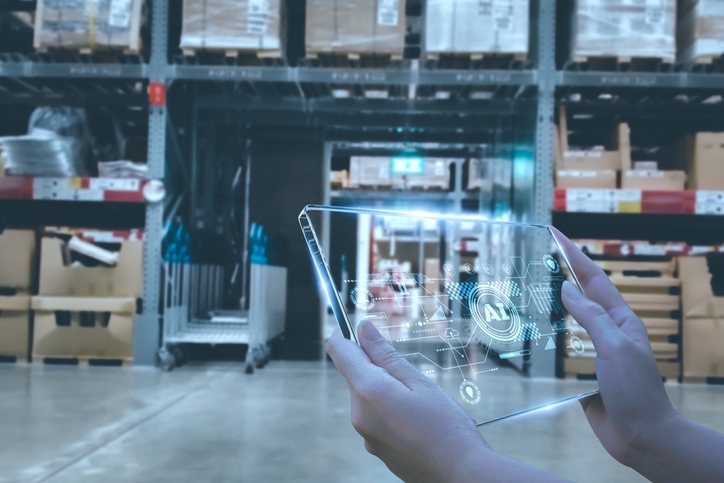From Chaos to Control: Complete Pre-Event Logistics Playbook
Streamline your event planning with essential pre-event logistics tips. Ensure a seamless experience for attendees. Read the article for practical insights!

Pre-Event Logistics Checklist: What to Plan Before the First Attendee Arrives
Planning an event is like conducting an orchestra—everything needs to be perfectly in sync before the show begins. And that harmony starts with one crucial phase: pre-event logistics.
From securing your venue and coordinating with vendors to preparing badges and managing speakers, this phase can make or break the entire attendee experience. In this guide, we’ll walk you through a comprehensive pre-event logistics checklist so nothing falls through the cracks before your guests arrive.
Why Pre-Event Logistics Matter
Pre-event logistics are all the behind-the-scenes activities that take place before the first attendee walks through the door. This includes planning timelines, coordinating vendors, prepping materials, managing registration, and more.
Why does it matter?
- Most event-day issues stem from missed pre-event details.
- Smooth pre-planning reduces stress, improves attendee experience, and avoids last-minute disasters.
- A strong pre-logistics plan sets up your entire event for operational success.
Logistics Timeline: When to Start Planning
The size and complexity of your event will determine how early you need to begin planning
Your timeline should include:
- Finalizing the venue and contracts
- Booking vendors and rentals
- Designing badges and signage
- Setting up your event management software
- Assigning internal roles
Tip: Use tools like Gantt charts or an event management platform like Azavista to track everything in one place.
7 Pre-Event Logistics Parameters to Plan Before the First Attendee Arrives
1. Venue Logistics & Site Prep
Your event venue is more than just a location—it’s the foundation on which the entire event experience is built. Whether you're planning a corporate event, sports event, or virtual event with hybrid elements, careful planning during this venue logistics phase ensures a seamless execution on the big day.
Here’s what to cover during the venue planning stage of your event planning process:
a. Booking & Contracts
Start by identifying the right venue aligned with your event goals, target audience, and event agenda. During the venue selection process, pay attention to:
- Availability across your intended event dates and setup/teardown days
- Capacity for attendees, guest speakers, and exhibitors
- Contract clauses: cancellation policies, financial constraints, deposit schedule, liability coverage
- Inclusions like AV support, cleaning staff, security personnel, or Wi-Fi
Pro tip: Ensure your event manager or event planning team keeps a copy of all signed contracts accessible in your shared documentation system.
b. Permits, Insurance & Compliance
Depending on the event type and location:
- Apply for required permits: public gathering, noise, signage, etc.
- Arrange insurance for general liability, property damage, and event cancellation.
- Comply with fire codes, health inspections, and accessibility laws.
This is especially critical for sports events, public expos, and large-scale corporate gatherings.
c. Layout Design & Floor Plan Logistics
Use detailed venue maps to design the venue’s layout based on your event schedule and planned activities. Your floor plan should include:
- Main stage and seating
- Breakout session areas with interactive features
- Check-in & registration process stations
- Onsite badge printing areas
- Networking lounges
- Catering and refreshment zones
- Exhibitor booths & sponsor branding
- VIP areas and green rooms for guest speakers
Effective logistics planning here ensures your event runs smoothly and avoids last-minute disruptions.
Use event technology or CAD-based tools to visualize movement flows and prevent congestion.
d. Accessibility & Safety
Accessibility isn’t optional—it’s essential to create a cohesive event experience for all attendees. Ensure:
- ADA-compliant ramps, elevators, and accessible restrooms
- Clear signage with large fonts
- Priority seating for elderly or special needs guests
- Emergency exits and fire extinguishers are mapped and visible
Also, coordinate with venue staff to prepare for technical glitches, crowd control, and medical emergencies.
e. Parking, Entry Points & Transportation Logistics
Plan transportation logistics as part of the event planning timeline:
- Coordinate shuttle services for large events
- Assign drop-off zones for VIPs and accessible entry
- Confirm parking capacity and direct guests with signage
- Consider valet or rideshare partnerships for high-end events
Brief your event management team and security personnel on traffic flow and entry schedules to avoid delays at key moments like registration or guest speaker arrivals.
f. Onsite Visit & Simulation
Before locking your layout:
- Conduct at least one onsite visit with your event coordinators, venue manager, and key team members
- Walk through the attendee journey
- Identify choke points, logistical challenges, or AV concerns
- Simulate the registration process and stage transitions
This allows for effective logistics planning and helps you streamline event logistics for future events too.
2. Vendor & Partner Coordination
Vendor and partner coordination involves strategic coordination between multiple parties involved—from AV techs and caterers to decorators and printers. Without a clear logistics planning system, it’s easy for things to fall apart. The goal is to simplify event logistics by assigning clear roles, deadlines, and communication channels.
Here’s how to keep your vendor coordination tight:
a. Build a Master Vendor List
Include every vendor critical to your event’s success:
- AV & production
- Catering & bar services
- Furniture rentals & décor
- Signage & badge printing
- Internet and networking
- Sanitation & waste disposal
- Security personnel, photographers, and entertainers
For each, track:
- Company name, contact person, and backup contact
- Email, phone number, contract start/end dates
- Setup requirements and delivery dates
- Power, space, or tech support needed
b. Setup and Teardown Schedules
Map every vendor’s production schedule into your event planning timeline:
- Identify time slots for each vendor’s load-in and load-out
- Coordinate use of loading docks and elevators
- Avoid vendor overlaps that might disrupt events or increase setup time
Use event management software to assign tasks and flag conflicts early.
c. Onsite Access, Badges & Checklists
Provide vendors with:
- Setup badges or colored wristbands
- Access hours and rules
- Contact list of specific team members and emergency protocols
- Maps showing booth location or designated space
Brief your event organizers on vendor protocols to prevent venue-related confusion.
d. Supply Chain & Delivery Coordination
Create a shared logistics tracker to streamline delivery flow:
- Add timelines for furniture, AV, signage, swag, food, and equipment
- Set delivery windows
- Assign internal team members to oversee and sign off each delivery
- Store copies of receipts and shipping labels for tracking
Discuss backup vendors or alternative sourcing plans in case of late arrivals, vendor dropouts, or supply chain delays.
e. Communication & Feedback Loops
- Set up a dedicated vendor communication channel (e.g., WhatsApp group or Slack)
- Confirm delivery status 3–5 days before the event
- Gather feedback from vendors post event to improve future events
Document all feedback in your post event reports to make vendor selection easier for your next event.
3. Shipping & Material Handling
Whether you're running a tradeshow, hybrid event, or conference, inventory management and timely shipping are key to effective event logistics management. From gift bags to signage, every item should arrive safely and on time.
a. Create a Detailed Shipping Manifest
For each shipment, list:
- Item name (e.g., brochures, banners, swag kits)
- Quantity
- Shipping source (vendor or office)
- Tracking number
- Recipient (e.g., “Hold for Event Manager, Booth #12”)
Use spreadsheets or inventory tools integrated with your event management platform for tracking and confirmation.
b. Clear Labeling System
To avoid misplaced packages:
- Include event name, booth/room number, recipient name, and contact info on all boxes
- Use color-coded tags or QR/barcode labels to assist warehouse staff or venue staff
- For large shipments, number boxes (e.g., Box 1 of 6)
c. Onsite Storage and Staging
If shipments arrive early:
- Coordinate temporary onsite storage with the venue manager
- Arrange locked rooms or designated staging areas
- Assign specific team members to oversee storage and access
Keep emergency items like backup badges, batteries, and chargers in a mobile kit for rapid deployment.
d. Customs & International Events
For global or multi-city events:
- Account for customs clearance delays, duties, and paperwork
- Hire experienced freight forwarding partners
- Use customs brokers for sensitive items like tech or branded gear
Factor these variables into your event budget and planning process to avoid last-minute blocks.
e. Return Shipments & Post Event Handling
Don’t forget post event logistics:
- Create a list of what needs to be returned (banners, tablets, sponsor booths)
- Assign return shipping vendors and labels in advance
- Store return items in a centralized staging area right after the event ends
- Record missing/damaged inventory to refine logistical challenges for the next cycle
4. Attendee Experience Logistics
The attendee journey begins long before they step foot in the venue. To ensure seamless execution and a professional first impression, event planners must carefully coordinate all touchpoints, from digital registration to onsite check-in and signage.
Here’s how to optimize attendee-facing logistics:
a. Registration Platform Setup
Choose a reliable registration system that:
- Supports multiple ticket tiers (early bird, group, VIP, media, etc.)
- Offers promo codes and tier-based perks
- Integrates with payment gateways and invoicing tools
- Syncs with your CRM and badge printing tools
Make sure registration materials like confirmation emails, QR codes, and ticket attachments are automatically generated and mobile-optimized.
Tip: Event planners should test the entire registration process themselves—desktop and mobile—to catch any UX issues.
b. Pre-Event Communication
Begin your event engagement strategy as soon as attendees register. Include:
- Automated confirmation emails with event name, dates, venue, Google Maps link, parking instructions, and cancellation policies
- Digital badges or QR codes for fast check-in or self-check-in kiosks
- A downloadable event agenda or app link with live updates
Also send reminder emails 7 days, 3 days, and 1 day before the event.
If stakeholders involved include sponsors or partners, send co-branded emails to maximize exposure.
c. Badge Printing Logistics
Plan your badge strategy in advance. Decide whether you will:
- Pre-print badges (sorted alphabetically or by category)
- Use onsite badge printing stations with check-in kiosks or tablets
Ensure:
- Clean design with name, company, title, and color-coded lanyards for access levels
- Accurate formatting of names from registration data
- Barcode or QR code integration for scanning during sessions or at vendor booths
Don’t forget:
- Durable lanyards, badge holders, and backup badge paper
- Separate designs for VIPs, staff, and sponsors
d. Entry & Welcome Experience
Your first impression sets the tone—this involves coordinating:
- Directional signage from parking to entry points
- Well-lit welcome desks with sufficient power and internet
- Staff trained to greet guests, scan badges, and answer FAQs
- Emergency signage and contacts for event security personnel
Event coordinators should rehearse the entry experience and map foot traffic to avoid bottlenecks.
Optional but impactful:
- Branded selfie wall or photobooth near check-in
- Live welcome screen with schedule countdowns and updates
5. Speaker, Sponsor & VIP Logistics
Coordinating with guest speakers, VIPs, and sponsors requires dedicated attention and precise execution. These groups are often the highlight of the event—and mistakes can damage credibility with high-value stakeholders involved.
Here’s how to ensure excellence in execution:
a. Speaker Logistics
Speakers need more than a mic—they need a frictionless experience that lets them focus on content. Cover:
- Confirmed session schedule, presentation time limits, and assigned rooms
- AV requirements: wireless clickers, microphones, video playback capability, backup laptops
- Travel coordination and hotel reservations (arranged or reimbursed)
- Dedicated arrival times and green room access
- Final deadline for presentation materials and slide uploads
Bonus: Offer tech rehearsals a day prior to test all equipment and minimize technical glitches. Assign a specific team member to manage all speaker coordination.
b. Sponsor Booth Logistics
Your sponsors are investing in visibility. Plan ahead to:
- Assign booth numbers and include them in registration materials
- Coordinate banner and promotional item delivery
- Include sponsor branding in pre-event emails, social media, and signage
Offer sponsor tiers added value:
- Priority booth locations
- Speaking opportunities
- Logo placements on digital screens and event swag
Use branded backdrops, power access, and pre-scheduled arrival times to ensure seamless execution.
c. VIP Experience
VIP guests may include executives, celebrities, or high-value partners. Tailor their experience:
- Arrange dedicated entry points with concierge welcome
- Offer private lounges or green rooms stocked with refreshments
- Coordinate transportation from hotel to venue
- Provide custom swag kits, meet-and-greet access, or branded seating
Security and privacy should be considered—event security should be briefed and positioned accordingly.
Assign a VIP handler to coordinate transportation and resolve any last-minute issues discreetly.
6. Tech Stack & Digital Logistics
Event technology is the backbone of modern logistics management. When optimized, it can reduce manual workload, prevent errors, and improve the attendee and organizer experience.
Here’s how to integrate your tech stack into your logistics planning:
a. Event Management Software
Use a platform that:
- Manages registration, check-in, speaker scheduling, and vendor tracking
- Supports email marketing, reminders, and follow-ups
- Enables real-time reporting for onsite activities
Azavista, for instance, allows you to streamline event logistics with centralized workflows.
b. Mobile App for Attendees
A branded mobile app should include:
- Personalized event agenda with session reminders
- Interactive maps showing venue layout and breakout sessions
- Push notifications for announcements or room changes
- Features like live polling, session feedback, and Q&A
Helps minimize printed materials and increases engagement.
c. Integrations with Other Systems
Sync your core tools:
- CRM for attendee segmentation and post-event follow-ups
- Badge printing systems for accurate name-tag generation
- Marketing automation tools (email/SMS) for ongoing communications
These integrations reduce duplication of work and simplify event logistics.
d. AV & Infrastructure Testing
- Test audio, lighting, presentation screens, and microphones at least once before event day
- Check all power sources and internet bandwidth, especially for virtual events
- Set up backup devices: clickers, laptops, power banks, routers
Ensure your event management team runs a full tech rehearsal 1–2 days in advance to catch any glitches before guests arrive.
7. Staffing & Volunteer Planning
Behind every well-run event is a highly coordinated team. Event planners must structure, train, and support their team members to handle live logistics with confidence.
Here’s how to structure your human support system:
a. Role Assignment
Assign specific roles such as:
- Registration/check-in coordinators
- Crowd flow & floor managers
- Help desk and information booth personnel
- Speaker liaisons and VIP handlers
- AV or tech support assistants
Every zone (venue, main hall, breakout room) should have a team lead who can make fast decisions.
b. Shift Scheduling
- Use scheduling tools to build rotating shifts with overlaps
- Build buffer time between shifts to prevent burnout
- Have standby volunteers ready to step in during high-traffic hours or no-shows
Factor in breaks, meals, and rotation of tasks for long events.
c. Volunteer Briefing Kits
Prepare a briefing packet that includes:
- Site maps and venue layout
- Emergency protocols and escalation matrix
- Contact list of team leads and security personnel
- Attendee FAQs, event agenda, and check-in script
Host a mandatory briefing session a day before the event.
d. Uniforms & Communication
- Provide branded t-shirts or lanyards to distinguish staff
- Distribute ID badges and zone access passes
- Set up communication tools: group chat (WhatsApp, Slack), or walkie-talkies for key leads
Ensure every staff or volunteer knows their task, point of contact, and fallback plan if something fails.
8. Risk & Contingency Planning
Even the best-laid plans can face unexpected disruptions. Whether it’s a technical glitch, a speaker delay, or bad weather—event planners must have a backup for every major component.
Here’s how to protect your event from surprises:
a. Backup Vendors & Equipment
- Secure secondary AV, catering, and print vendors with standby contracts
- Bring extra badge printers, batteries, cables, and laptops
- Have a spare set of critical registration materials onsite
b. Weather Contingency Plans
For outdoor or semi-outdoor events:
- Rent tents or marquees as a fallback
- Reserve an indoor venue backup if possible
- Pre-alert attendees of possible weather changes and what to expect
c. Medical & Safety Protocols
- Station medical staff onsite for large or high-risk events
- Create an emergency evacuation plan and share with team members
- Train event security on managing panic or crowd issues
Maintain a lost & found booth, especially for multi-day conferences.
d. Tech & Infrastructure Failures
- Have backup Wi-Fi routers, extension cords, power strips
- Keep duplicate AV devices and printed schedules
- Enable offline access for check-in systems if internet fails
e. Quick Response Plan
- Assign a crisis response team and name a single point of contact per major area
- Develop a step-by-step protocol for managing different scenarios (tech, medical, weather)
- Run a contingency drill before event day
When logistical challenges arise, fast reaction and clear chains of command will preserve your attendees’ experience and protect your brand.
Final Tips for Flawless Pre-Event Logistics
- Start planning early—especially for international or hybrid events.
- Use cloud-based tools to keep everything centralized.
- Always add buffer time and contingency plans.
- Double-confirm everything—vendors, badges, arrivals, software.
- Conduct a full pre-event rehearsal or dry run 48 hours before.
Conclusion
Pre-event logistics are the silent engine powering a smooth and successful event. With this checklist, you’ll be able to pre-empt problems, impress attendees, and deliver an unforgettable experience.
Need help managing the moving parts of event logistics? Explore how Azavista’s event management platform can streamline your planning from start to finish.
Would you like a downloadable checklist or infographic version of this blog to use as a lead magnet or content upgrade?
More Event Management












